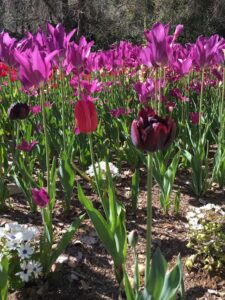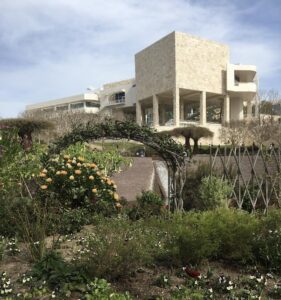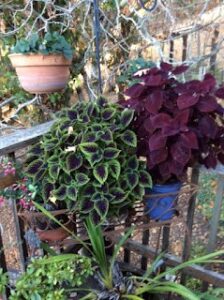Stanford Arboretum, Gamble Garden, San Jose Municipal Rose Garden, Hakone Garden, and Santa Clara Mission
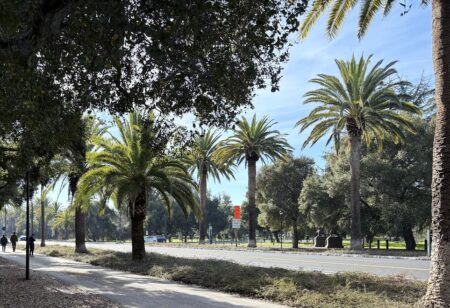
Over the Christmas vacation I had some time to revisit the some of the Botanical Gardens in Santa Clara County such as the Stanford Arboretum and the Gamble Garden in Palo Alto. Luckily it was a beautiful sunny day and with the holidays there were only a few tourists on the campus at Stanford. I have driven through the campus many times and walked the main part of grounds but hadn’t focused on walking through the large area at the entrance of the campus dedicated to open space and an assortment of large trees. It is this area that very much enhances the beauty of the entry road- Palm Drive.
Leland Stanford Arboretum
Leland Stanford set out to have an Arboretum with a large and diverse collection of trees in 1888 and it was one of his favorite projects. In fact the Stanfords planned to keep a large expanse of open space as part of the overall University grounds. Originally the area was planted with over 350 species and 150 genera but as the University grew and money and land was needed for expansion much of the Arboretum area was sold off or built on. The remaining 5 acres (I am guessing on size) is large enough for a good walk and to cushion the campus from the city of Palo Alto.
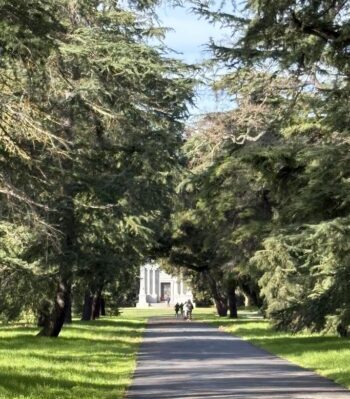
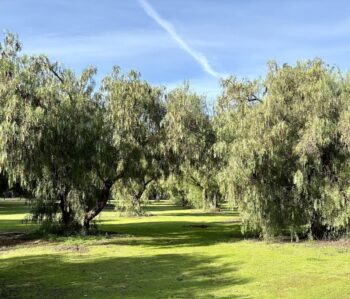
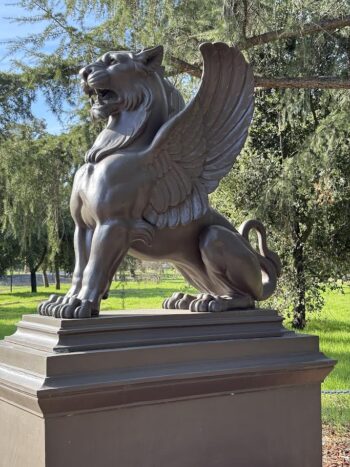
Today the still sizable Arboretum houses large groups of Eucalyptus, Live Oaks, Palms, Blue Atlas and Deodar Cedars, Torrey Pine, White Ash, California Pepper Trees, Mulberry, California Sycamore and Santa Lucia Fir. Along with a very active ground squirrel population and a chorus of birds providing delightful songs to offset the sounds of the city.
It is not a formal Arboretum with labeling and each specimen set alone, but a semi-wild place with thick mulch for path areas and a few paved walkways for easy access to the campus. Within the Arboretum is a Mausoleum standing among the trees and sentimental statuary commemorating the loves of the Stanford Family. If you read their history you will find that the University is dedicated to their 19 year old son who died of typhoid fever just as he was coming of age. What they created is a beautiful and elite institution for higher learning complete with grounds suited to the California climate.
Visiting local Botanical Gardens in your area can help you understand what plants do well in your climate zone. And also give you ideas of plants you might try or themes for your garden.
Hidden among the Oaks is a very fine Cacti and Succulent Garden. Large Cholla, barrel cactus, Saguaro and Prickly Pear are specimens in their own right along with Joshua Trees and a Palo Verde Tree. Its bright green bark is as interesting as its yellow blossoms in the spring.
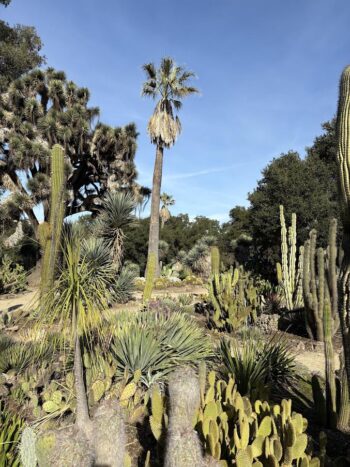
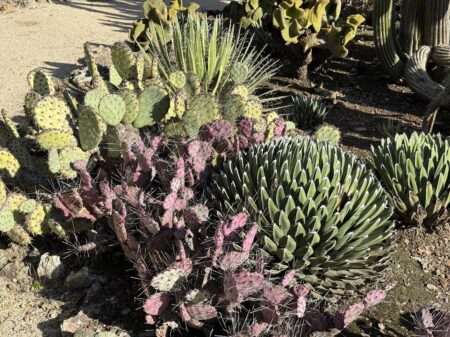
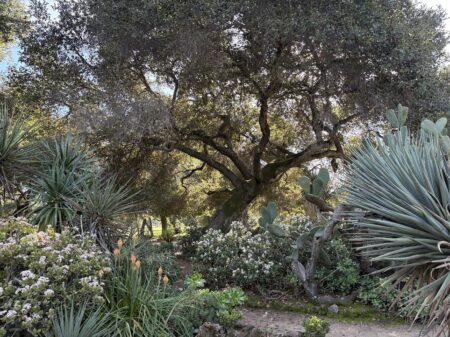
I wandered over to the Auguste Rodin Sculpture Garden adjacent to the Cantor Museum to get another perspective on what a garden can be. Gravel replaces lawn and perfectly trimmed Italian Cypress acts as a backdrop to assortment of human figures cast in bronze. They seem natural to this place with their classical history themes, deep brown surfaces and quiet presence. I am not sure the doorway sculpture entitled “the Gates of Hell” would be called quiet as well- it is very dynamic and even horrifying! It definitely invites contemplation though.
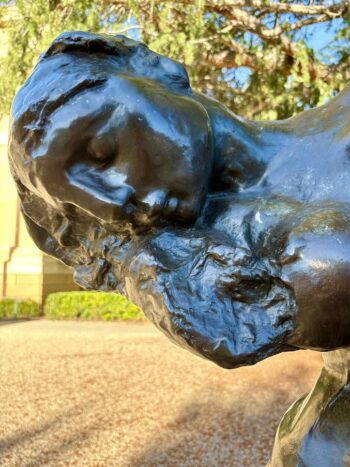


Throughout the campus there are hidden courtyards, secret gardens, lawn and flower areas, sculptures, fountains and murals. I don’t miss the chance to see the incredible mosaics and stone work on the front of the chapel in the quad when I visit Stanford. The interior of the chapel is equally as decorated! The quad and Hoover Tower are the heart of the campus from which the University extends out all the way to the foothills of the Santa Cruz Mountains.
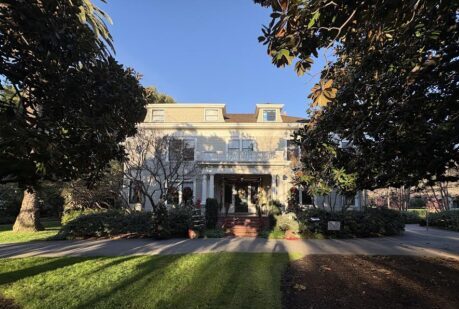
Gamble Garden
A few miles from Stanford is a formal garden set around the Elizabeth F. Gamble House. Built in 1902 with gardens added around 1908 and the Tea House built in 1948 the property has the majesty of old Palo Alto. Giant Magnolias, Live Oaks and Camellias with smaller fruiting and flowering trees make a shady site for azaleas, hosta, Japanese anemone, rhododendron and ferns. Large sections of demonstration gardens and specialty plantings thrive under the care of dedicated volunteers who host groups of children and adults frequently. The garden is on a busy street corner but once you are strolling the path ways or enjoying one of the many benches it is a calm and refreshing place away from stress and strain. It easy to imagine that time has slipped away to the turn of the century.
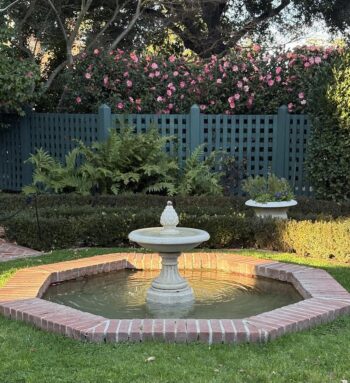
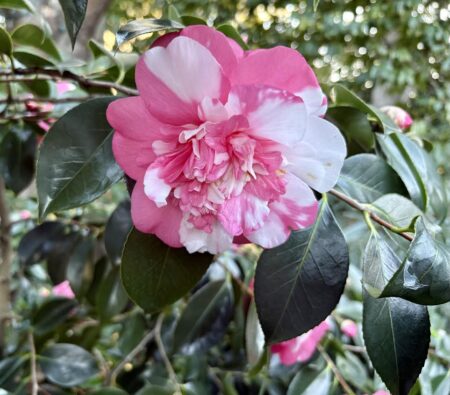
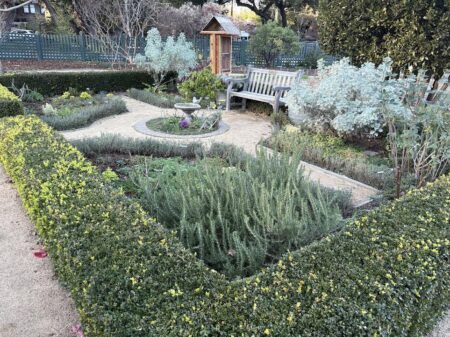
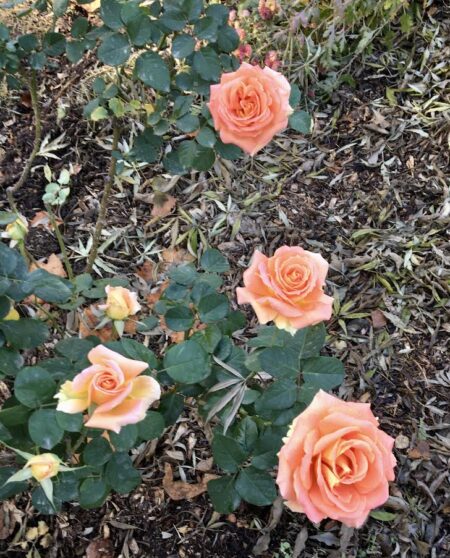
San Jose Municipal Rose Garden
Other gardens to visit in Santa Clara County include the San Jose Municipal Garden- just down the street from the Rosicrucian Egyptian Museum and in the part of San Jose called the Rose Garden. With a huge fountain at its center and 5 1/2 acres of Roses, lawns and sitting areas this is an attractive meeting place for families, couples and groups. Peak bloom time is in May and June but there are usually some roses blooming in the growing season. Volunteers do an admirable job of helping to maintain the rose beds and trying to keep the Bermuda grass from taking over! I can be hot in this garden so go in the morning if you can.
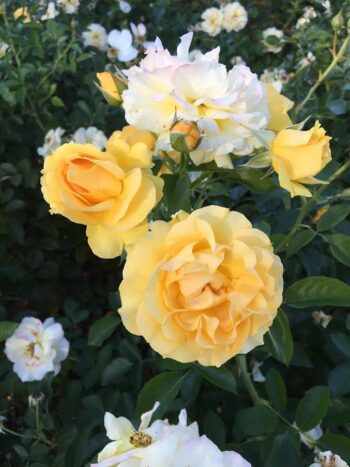
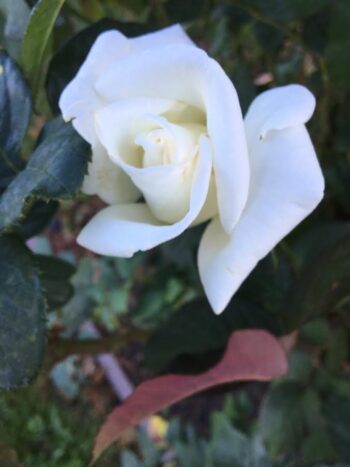
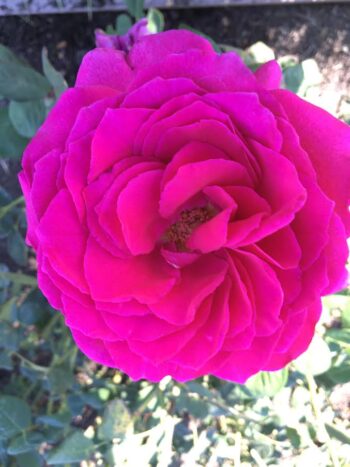
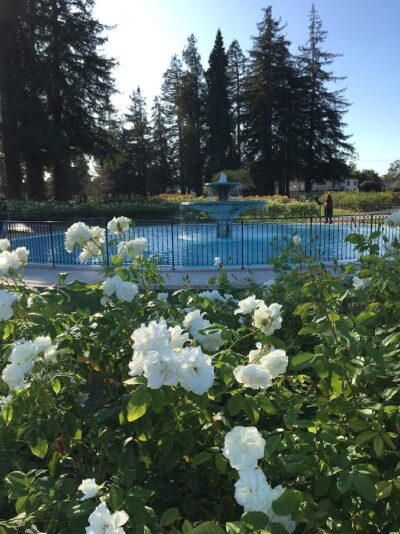
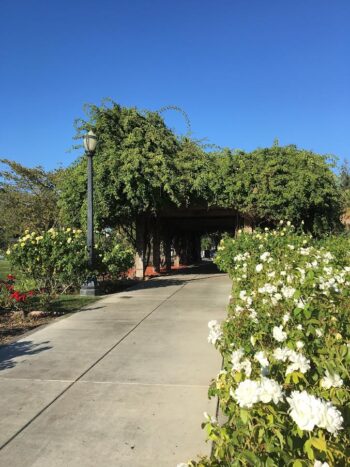
Mission Garden at Santa Clara University
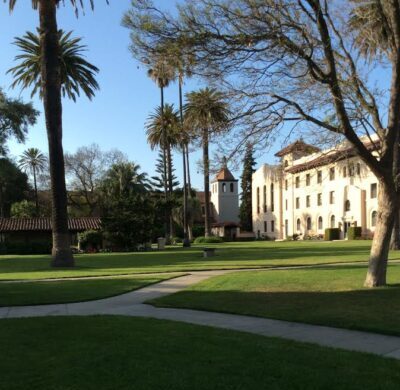
Another of the stops when visiting Botanical Gardens in Santa Clara County is the garden behind the old Santa Clara Mission which is on the Santa Clara University Grounds. Many of the old California Missions have interesting small gardens or at least some interesting old plants. In this garden there is a very old Wisteria (over 100 years) that covers a walkway arbor extending 50-100′. Gorgeous when it blooms in April and into early May with fragrant flowers. There are also Angle’s Trumpet, Roses and flower areas, Olive trees, Citrus, Palms and many shade plantings. The old buildings and courtyard feel of the garden gives a sense of the Mission period and sanctuary.
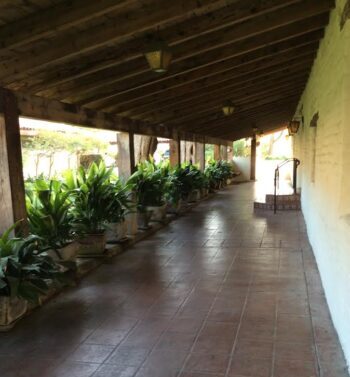
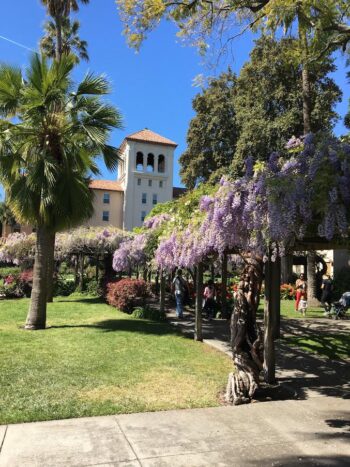
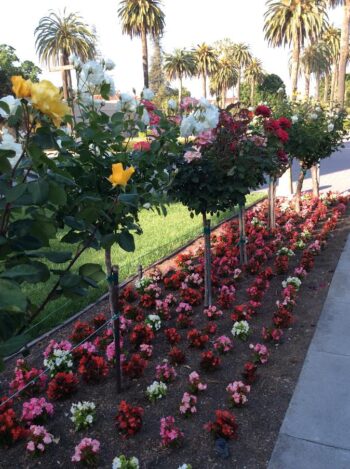
Hakone Gardens
Nestled in the hills of Saratoga is a very special Japanese Garden- Hakone. This is the only garden that I have listed here that has an admission fee but it is well worth a visit. Built in 1918-1924 and added onto over the years, the garden is one of the best examples that I have seen of utilizing a properties natural features to create a specialized garden and structures. The Japanese Tea house, Pavilion and Home are authentic reproductions of traditional Japanese buildings. The surrounding gardens are also true to the Japanese principles of design and care.
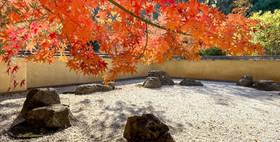
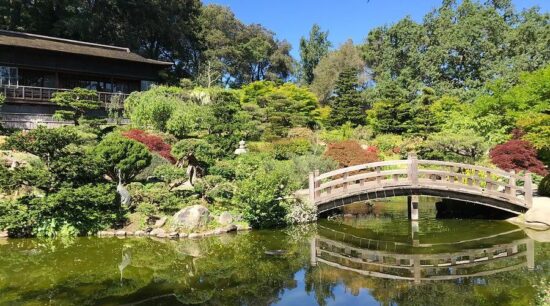
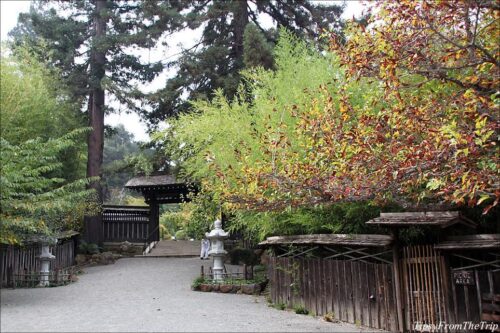
The sloping property is 15 acres with both gardens and native woodland around the buildings. One of my favorite features here is the small stream and waterfall built into the slope and running down to a large Koi pond. Bridges and pathways cross the water areas and run throughout the garden revealing Bonsai on islands of mondo grass, Camellia and azalea areas, sitting areas and arbors and a dry garden with raked stones. Japanese Maples and Flowering Cherries are a highlight here as well as the large section of timber bamboo (outside the deer fence and upslope from the parking lot).
Whether your in Santa Clara County on business or pleasure, take a little time to enjoy the sites and one of the Botanical Gardens. If you live in the area, visit all the gardens in different seasons. Its a great way to get a walk in and enjoy the outdoors.
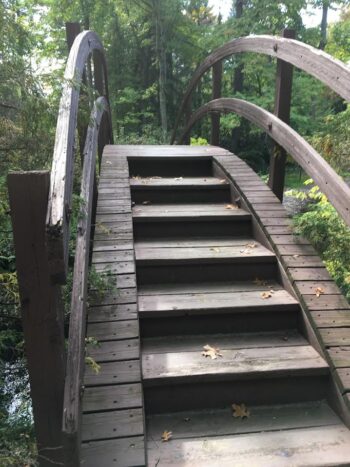
Travel to the Botanical Gardens of the U.S. and Abroad
Join me on a delightful tour of the Botanical and Public Gardens around the U.S. and Abroad. Plan a trip or enjoy from your armchair. Gorgeous photos, insightful commentary and ideas you can use in your own garden. Click the Travelogue button above or go to courses on my website.

